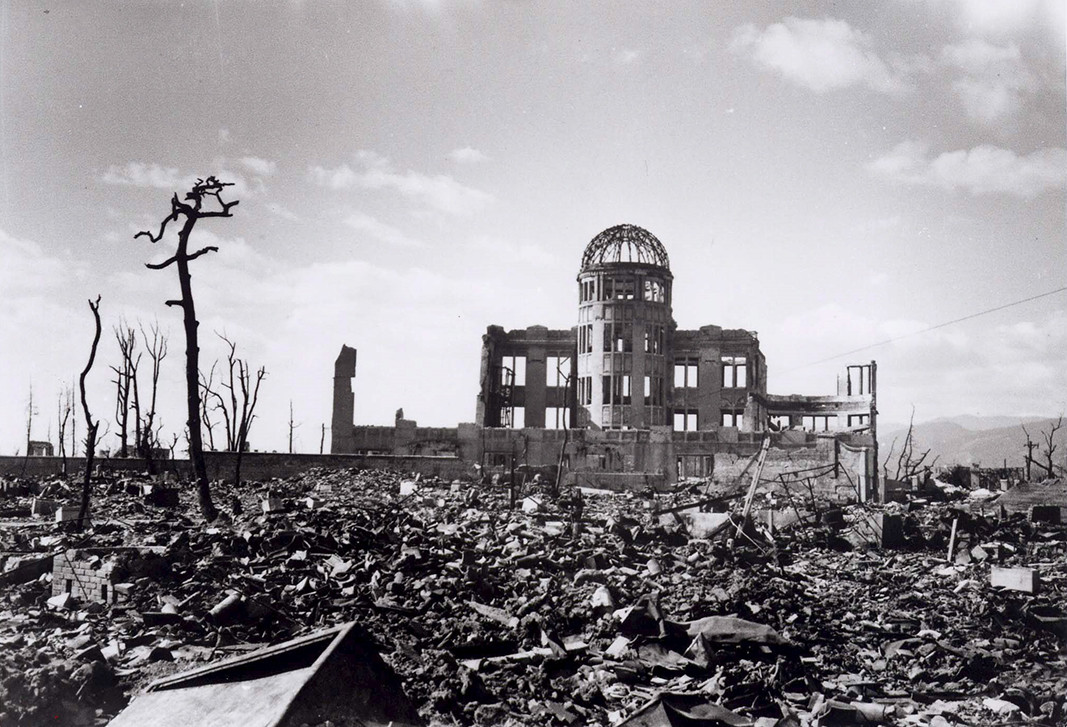2025 marks the 80th anniversary of the atomic bombing of the Japanese city of Hiroshima. Traditionally, as a sign of sympathy for the victims of the attack, every year only on August 6, the Bulgarian public can see a unique relic - The Hiroshima Stone. It is a part of the collection of the Earth and Man National Museum in Sofia and is exhibited in the "Giant Crystals" hall.
This is one of a total of 188 granite pieces engraved with the image of the goddess of mercy Kannon, which were spread around the world as symbols of peace. The stone was part of the pavement in Hiroshima and was located 200 m away from the place where the bomb fell. But how did it end up in Bulgaria?

Two weeks after the tragic event in Hiroshima, Reikiyo Umemoto went to the city to see those of his friends who survived. Most of the buildings in the city were completely burned. Devastated by the sight, Umemoto walked along the Aioi Bridge about 200 meters from the site of the explosion, where a tram line used to pass. A sudden gust of wind blew away the ash under his feet and he saw that the paving stones on which the rails were laid - silent witnesses to the nuclear hell - had survived. Then the man had the idea of using them to preserve peace and to be a memorial to all the victims of the atomic bomb and he became founder of the Stone for Peace Association of Hiroshima.
In 1965, when the pavement was replaced, he bought the stones and after several years when the granite pieces were no longer radioactive, they were engraved with the image of the goddess of mercy. In 1991, the 188 stones were sent to the leaders of 188 countries in the world as a symbol of the aspiration for peace of all mankind.

The Hiroshima Stone was handed over to the Earth and Man National Museum in 1997 by the President of Bulgaria with the commitment that the Day of Compassion will be celebrated in an appropriate manner.
The event at the Earth and Man National Museum will be held today (August 6) from 10:00 to 18:00, with free admission from 11:00 to 12:00. Japanese pianist Yusuke Hosaka will perform at 11:00.
Read also:
Text: Miglena Ivanova
Publication in English: Alexander Markov
Photos: earthandman.org, BGNES
The village of Hotantsa, near the Danube city of Ruse, is hosting the Hotantsa Sarma Festival , a celebration of Bulgaria’s culinary and folk heritage. Organised by the local cultural and community centre ( chitalishte ) Svetlina-1928 , the festival..
He does not accept the definition of "apostle" or "missionary", although for many he is exactly that - a messenger of God in the world, proclaiming His Word. He first became a priest in his native Vidin diocese, in Northwestern..
Over 80% of Bulgarians are expected to start using artificial intelligence in the next three years , across all age groups. Today, it is almost impossible to find a Bulgarian student who does not turn to ChatGPT when preparing homework. This..
Over 80% of Bulgarians are expected to start using artificial intelligence in the next three years , across all age groups. Today, it is almost..
The village of Hotantsa, near the Danube city of Ruse, is hosting the Hotantsa Sarma Festival , a celebration of Bulgaria’s culinary and folk heritage...
"We cannot escape from modern technologies, but we must think about how we can use artificial intelligence to improve the quality of..

+359 2 9336 661
